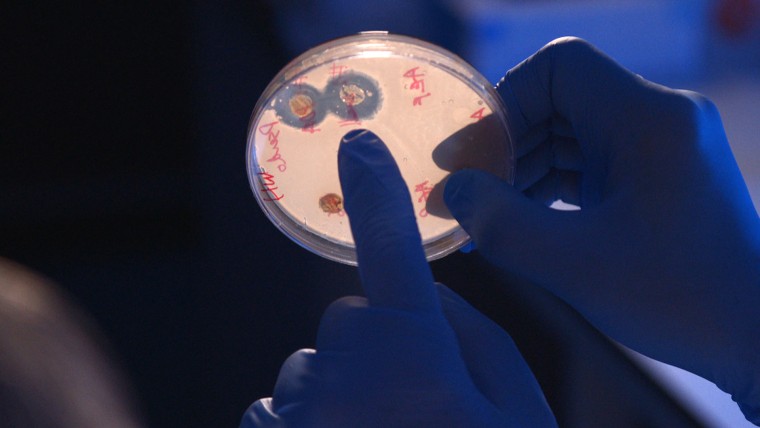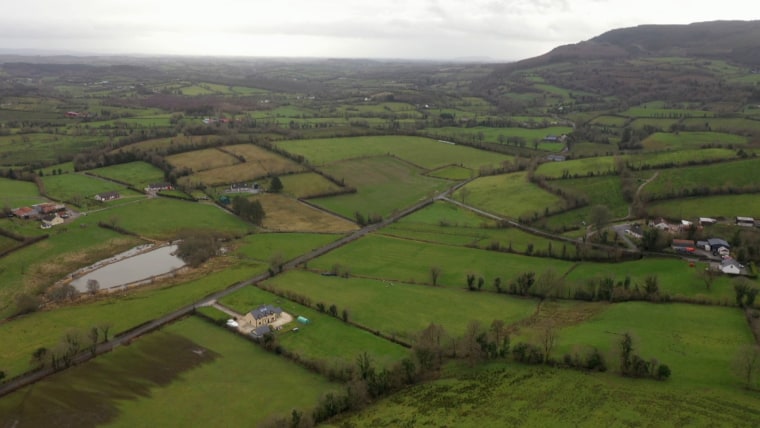As antibiotic-resistant bacteria become more common and more deadly, the solution to this relatively new problem may come from a bit of old Irish folklore and tradition.
For microbiologist Gerry Quinn, the search for new medications led back to his childhood home in Ireland. On a hunch, he followed up on some folklore his family had passed on to him: Old timers insisted that the dirt in the vicinity of a nearly 1,500-year-old church in County Fermanagh in Northern Ireland, an area once occupied by the Druids, had almost miraculous curative powers.
“Countries still retain ethnic folk medicine and a lot of that medicine is forgotten. But here in the western fringes of Ireland there is still a tradition of having this folk cure,” Quinn told NBC News. “We can look at it and see maybe it's just superstition — or we can actually investigate and ask, 'is there anything in the soil that produces antibiotics?' "
There is precedent.
“A lot of the antibiotics we have now are so-called natural products,” said Dr. Allan Coukell, senior director of health programs at the PEW Charitable Trust. “That means they’re molecules that actually existed in nature and that the bacteria and other living creatures have developed as a form of defense.”
The World Health Organization calls antibiotic resistance one of the top 10 public health threats in 2019. This rapid growth of antibiotic resistant bacteria has made Quinn’s and other scientists’ search more urgent.
“To put it in perspective, every year in the United States at least 23,000 people die from an antibiotic resistant infection," Coukell said. "That’s like a jumbo jet crashing every week.”
Once Quinn and his team decided to focus on the Irish soil, they narrowed their search to a specific type of bacteria, called Streptomyces, because other strains of this bacteria have led to the development of 75 percent of existing antibiotics, Quinn said. The bacteria was discovered by a team based at Swansea University Medical School, made up of researchers from Wales, Brazil, Iraq and Northern Ireland.
The researchers first tried the newly discovered strain of Streptomyces on some garden variety bacteria. In their petri dish experiment, “it knocked them out,” Quinn said. “Then we thought we’d take it one step further and find some multi-resistant organisms."
The bacteria in the experiment killed four out of the top six organisms that are resistant to antibiotics, including MRSA.
"It’s quite surprising,” said Quinn.
Quinn and his team described their experience in a study published last fall in Frontiers in Microbiology.
Most of our antibiotics “trace to naturally occurring microbial based substances that bacteria or funguses produce,” Vaughn Cooper, evolutionary geneticist and microbiologist at the University of Pittsburgh School of Medicine told NBC News. To survive and thrive, these microorganisms need to come up with antibiotics and other compounds that will vanquish competing neighbors, he explained.
While the research shows promise, it’s a long way from the petri dish to an antibiotic that will kill superbugs in human beings.
Still, “it’s a cool discovery,” said Cooper.

“Bioprospecting”— the search for new drugs in plants and animals — has great promise, but before any newly discovered compounds can make it to the clinic, it must be proven that they not only can kill dangerous bacteria, but also that they won’t harm human, Cooper said.
“The strength of this report is that whatever this strain of Streptomyces is producing is effective against a broad sample of pathogens,” he added.
Meanwhile, the search has taught Quinn about the search for new medications.
“The lesson is, some of the cures are right underneath your feet,” he said.

